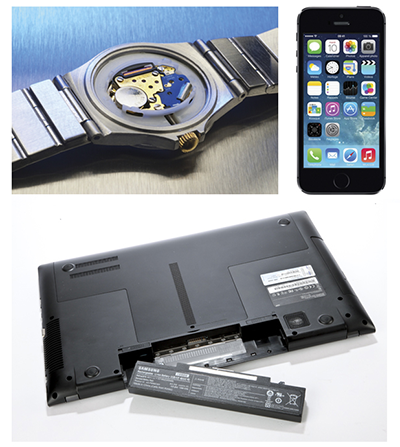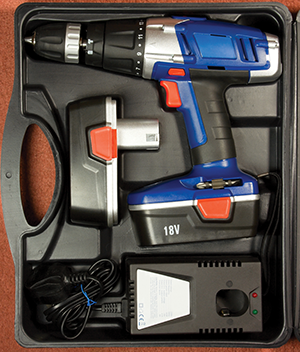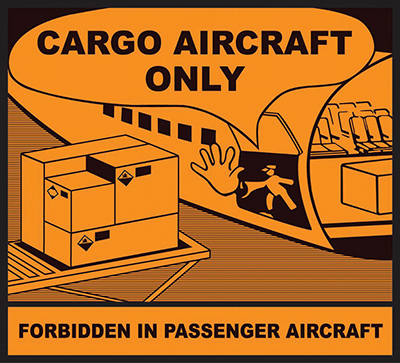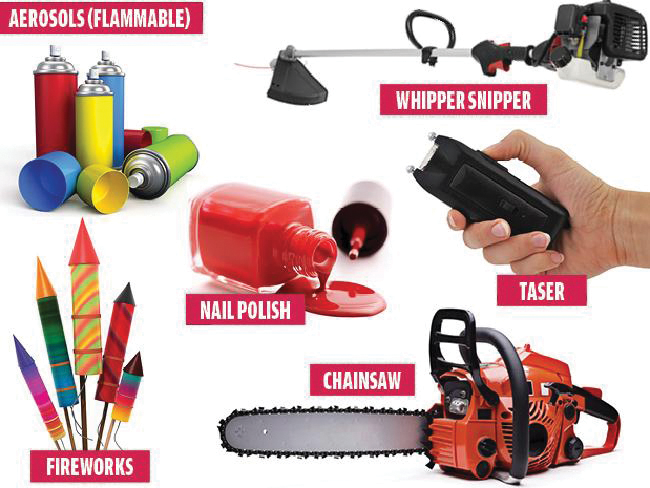Getting Familiar with the New Air Transport Regulations
Unresolved airplane crashes that were likely caused by batteries catching fire onboard include the Asiana Airlines 747 near South Korea in July 2011, a UPS 747 in Dubai, UAE in September 2010 and a UPS DC-8 in Philadelphia, PA in February 2006. These events prompted authorities to tighten rules when transporting batteries. The largest change involves shipping lithium batteries by air, governed by the International Air Transport Association (IATA). The goal is to assure the safety of passengers while traveling aboard a common carrier, as well as the safety of the crew handling batteries in distribution hubs.
Between 1991 and 2016, the U.S. Federal Aviation Administration (FAA) recorded 138 airport and air incidents involving lithium batteries. These involved smoke, heat and fire related to battery-operated devices such as e-cigarettes, laptops and mobile phones. Some incidents occurred before takeoff and the batteries were removed from the aircraft. Battery fires in flight were extinguished with halon type fire extinguishers and water, and by placing the device in a thermal battery containment bag that some airlines carry. Failing batteries in the cargo bay with checked luggage required emergency landings.
Not all incidents are reported to the FAA, but the number of reported incidents is up from 2015. Recorded failures in 2016 involved 13 e-cigarettes, four laptops, seven mobile phones/tablets and seven spare batteries. E-cigarette incidents increased notably, while mobile phone and laptop events remain moderate considering the number of such devices in use.
Cargo handlers in distribution hubs blame incorrect packaging for battery failures. Although lithium-ion gets most attention, it only was a factor in 27 percent of all incidents. Most battery-related incidents were caused by a short circuit that could have been prevented with proper packaging. Figure 1 shows unprotected cells that can cause an electrical short when they come in contact with one another. Do not ship exposed bare batteries; instead, place them in clear plastic bags.
Much blame goes on faulty packaging and handling at cargo hubs and airports. Regulatory authorities recommend placing each battery into a clear plastic bag.

Traveling with Batteries
Air travelers are reminded of how many batteries they can carry on board in portable devices and as spares. Lithium batteries can no longer be placed in checked baggage, but must be carried onboard. Quick access to a fire extinguisher is available should a battery catch fire in the cabin. A pot filled with coffee successfully served as the fire extinguishing device for a flaming laptop battery in one reported incident.
Transported lithium-based batteries are divided into two types: lithium-ion found in mobile phones and laptops, and non-rechargeable lithium-metal used in medical devices and a number of consumer grade AA, AAA and 9V batteries. Airlines allow both types as carry-on, either installed in devices or carried as spare packs, as long as they don’t exceed the following limitation of lithium or equivalent content:
- 2 grams per battery for primary lithium batteries, also known as lithium-metal
- 8 grams per battery for secondary lithium-ion. This amounts to 100Wh of batteries
- 25 grams total per passenger for all Li-ion batteries combined. This amounts to 300WH of batteries
The lithium content of a lithium-metal battery is often printed on the label. Li-ion, on the other hand, uses equivalent lithium content (ELC) that is calculated by multiplying the rated capacity (Ah) times 0.3. For example, a 1Ah cell has 0.3 grams of lithium. A modern 18650 cell with a capacity of 3.4Ah contains about 1 gram. The 8-gram limit permits a 26Ah battery, or 95Wh (Ah multiplied by the Li-ion cell voltage of 3.6V equals Wh). The 18650 is a standardized Li-ion cell of 18mm in diameter and 65mm in length, and is used in laptops, power tools and other devices. Most laptop batteries are in the 60Wh range.
While regulations limit the Li-ion battery to no larger than 100Wh, each passenger is allowed to carry two spare packs of 160Wh each, not exceeding 320Wh in total. The airlines recommend placing each battery in a clear plastic bag to prevent electric short. Batteries that are contained within devices and are not easily removable are exempt from the rules, and usually include electric watches, smartphones and laptops, but not power tools with interchangeable battery packs. Figures 2a and 2b illustrate examples of “contained in equipment” and “packaged with equipment.”


When Does Class 9 Dangerous Goods Apply?
All lithium batteries are considered to be dangerous goods and transporting them requires compliance with Class 9 directives. However, exemptions are made when shipping these batteries in small quantities. Personnel transporting lithium batteries commercially must be trained. Organizations such as iHazmat or the International Compliance Center (ICC) educate shippers and packers in the handling of dangerous goods consistent with IATA requirements, and issues a certificate of compliance to those participants who pass a written examination. Those not familiar with these restrictions often ask some of the following common questions:
Q: Must consumer-type lithium-ion batteries always be shipped under Class 9?
A: No. Most Li-ion in consumer products are less than 100Wh. However, CAUTION labeling is required.
Q: What quantities can I ship outside of Class 9?
A: Cells with a maximum rating of 20Wh not exceeding 8 in quantity, or two batteries with a maximum rating of 100Wh each as part of Section II described below.
Q: When does Class 9 apply?
A: Lithium-based batteries classified under Section IA and IB described below.
Q: Must lithium-ion batteries be tested for shipment?
A: Yes, all Li-ion must be tested according to UN 38.3. Exceptions are made for prototypes and for testing purposes. Refer to CFR 49 173.185 (e) for requirements regarding the shipment of cells or batteries that have not been tested to the requirements of UN 38.3.
Transporting lithium batteries are organized by packaging instructions (PI) numbers. The most common designations include:
- PI 965—Loose Li-ion cells and packs (UN 3480)
- PI 966 and 967—Li-ion with/in equipment
(UN 3481) - PI 968—Lithium-metal cells and battery packs (UN 3090)
- PI 969 and 970—Lithium-metal with/in equipment (UN 3091)
Each PI is further divided into Sections representing IA, IB and II (Roman numerals). IA is most stringent:
- Carry-on—Maximum 100Wh, passenger can take two spares up to 160Wh each, not exceeding 320Wh. No check-in allowed.
- Section II—Shipment of small Li-ion in low numbers. These can include up to eight cells not exceeding 20Wh each and up to two packs not exceeding 100Wh each at a total weight of 2.5kg. Batteries must be at 30 percent state-of-charge (SoC) for shipment. Persons preparing such shipments are exempt from dangerous goods training certification, but must be provided with “adequate instruction.”
- Section IB–Shipment of small Li-ion products in larger numbers under Class 9 dangerous goods. Similar to Section II with 10kg cargo limit per package. Batteries must be at 30 percent state-of-charge (SoC) for shipment. Training and certification is mandatory.
- Section IA—Larger Li-ion products under Class 9 dangerous goods. Cells can be larger than 20Wh, and packs can exceed 100Wh, but package limit is 35kg. Batteries must at 30 percent SoC. Training and certification is mandatory.
All Li-ion shipments must include the CAUTION labels as shown in Figure 3a to indicate the presence of lithium batteries. Since lithium batteries are only allowed in cargo aircraft, also attach the “Cargo Aircraft Only” label illustrated in Figure 3b. Batteries shipped in Class 9 must include the Class 9 label as per Figure 3c.

Must be attached to all packages as per Sections II, 1A, 1B. This also applied if shipped by courier and mail.

New regulation requires that all lithium batteries be shipped on cargo aircraft only. Attach this label when applicable.

Must be attached to packages as per Section IB and IA in addition to the CAUTION label.
All batteries shipped under PI 965 in Sections II, IA and IB must have a SoC of 30 percent. Li-ion is more stable at low SoC than when fully charged. (An analogy is a boiler that is safer at low pressure than when the gauge touches the red line.) An open circuit voltage of 3.70V indicates that the Li-ion cell is roughly at a 30 percent SoC. Voltages of Li-ion vary according to chemistry and the shipper must be familiar with the type to assure correct charge levels. The SoC limit does not apply to Li-ion that are packed with or installed in products.
Regulations are only as good as actual adherence to the rules. Shipment of dangerous goods can be circumvented by deliberately mislabeling batteries. There are reported cases where Li-ion was marked as NiCd, a chemistry that is not classified as dangerous goods. In other cases, lithium-metal that has the strictest requirements was listed as more benign Li-ion. Battery chemistries are difficult to identify and the offense may go undetected. Tightening rules only makes sense if the system can be policed with reasonable ease; imposing rules that are too stringent will invite lawbreakers. Only purchase lithium batteries that come from a reputable company and check to
ensure that the batteries meet the UN Manual of Test and Criteria requirements.
Shippers and passengers must be aware that batteries are not the only dangerous good banned on an aircraft as cargo or in checked luggage. Travelers often put the safety of other passengers in danger by checking in or bringing on board banned items. Some of these goods are illustrated in Figure 4. The Civil Aviation and Safety Authority (CASA) reminds travelers to declare potentially dangerous goods. Check dangerous goods under CASA if uncertain what is allowed.

Shipping Batteries by Ground
Not all batteries are subject to regulations applicable to the transportation of dangerous goods. Exempt batteries include those comprised of alkaline, nickel-cadmium and nickel-metal-hydride.
Most couriers honor the “500kg exemption” for small parcel shipments. This mode eases paperwork and simplifies UN specifications in packaging. The maximum weight per package is 30kg and the total shipment cannot exceed 500kg. Each box requires a CAUTION label and bill of lading to indicate the class of dangerous goods.
Unlike lithium batteries under Class 9, spillable lead acid batteries belong to corrosive substances under Class 8 controlled by UN 2794. A spilled Class 8 battery can cause property damage or personal injury. Figure 5 shows the HAZMAT Class 8 label that is commonly seen on trucks.

When transporting Class 8 goods, note that a vehicle can only carry one type of hazardous material. Stack batteries upright on a wooden pallet, place honeycomb cardboard between layers and limit stacking to three layers per pallet. Wrap each pallet with shrink-wrap to improve stability. Add the “Corrosive” label, UN 2794 identification number and the mark “Wet, filled with acid.” Provide a bill of lading with description of hazardous material, company name and shipper’s name.
Some wet, non-spillable sealed lead-acid batteries grouped under UN 2800 are exempt from Class 8. Each battery manufacturer must declare how a battery is regulated on its associated material safety data sheet (MSDS) and most absorbent glass mat (AGM) batteries can be shipped under the simpler UN 2800 directive. MSDS contains information on the potential health effects of exposure to chemicals or dangerous substances, and on safe workplace procedures when handling chemical products.
Use Common Sense When Carrying Batteries
Avoid storing and transporting small batteries in a metal box. Do not carry batteries with coins and house keys in your jeans. Respect battery power when accidentally shorted, especially lithium systems. While a household alkaline cell only gets hot when shorted, lead acid will draw high current for a few seconds, heat up and possibly spill. Lithium-ion is most treacherous. An unprotected Li-ion cell or battery continues to draw high current that can lead to a violent self-destruction and injury through heat exposure and venting with flame. The damage is especially large when fully charged.
Up-to-date information on shipping lithium batteries by air is available on http://www.iata.org/training/courses/Pages/shipping-lithium-batteries-tcgp52.aspx. Also visit http://batteryuniversity.com/learn/article/bu_704a_shipping_lithium_based_batteries_by_air.
Disclaimer: While every effort was made to ensure that the information contained in this publication is accurate, Cadex does not warrant or guarantee accuracy and completeness; nor does Cadex take responsibility for any errors, omissions or damages that may arise from this information. These guidelines are for informative purposes only. Refer to International Air Transport Association (IATA) regulations when shipping lithium metal or lithium ion batteries or cells: http://www.iata.org/lithiumbatteries.
 Isidor Buchmann is the founder and CEO of Cadex Electronics Inc. For three decades, Buchmann has studied the behavior of rechargeable batteries in practical, everyday applications, has written award-winning articles including the best-selling book “Batteries in a Portable World,” now in its fourth edition. Isidor can be reached at Isidor.buchmann@cadex.com.
Isidor Buchmann is the founder and CEO of Cadex Electronics Inc. For three decades, Buchmann has studied the behavior of rechargeable batteries in practical, everyday applications, has written award-winning articles including the best-selling book “Batteries in a Portable World,” now in its fourth edition. Isidor can be reached at Isidor.buchmann@cadex.com.
